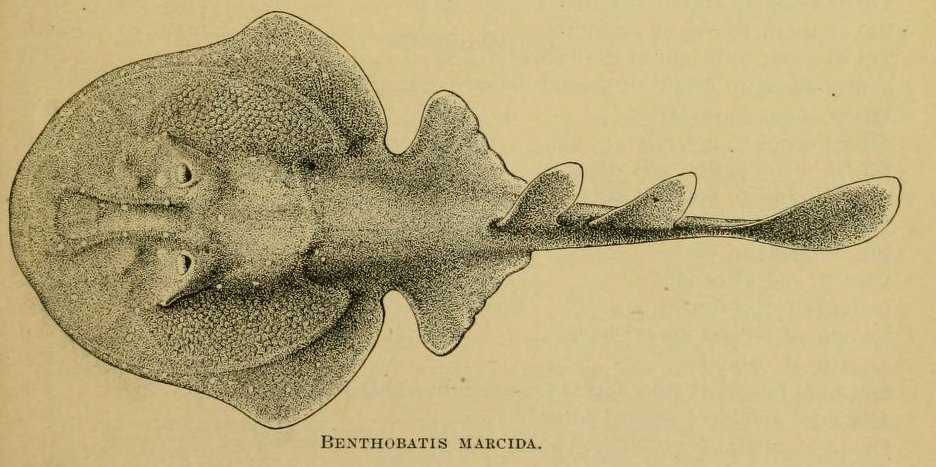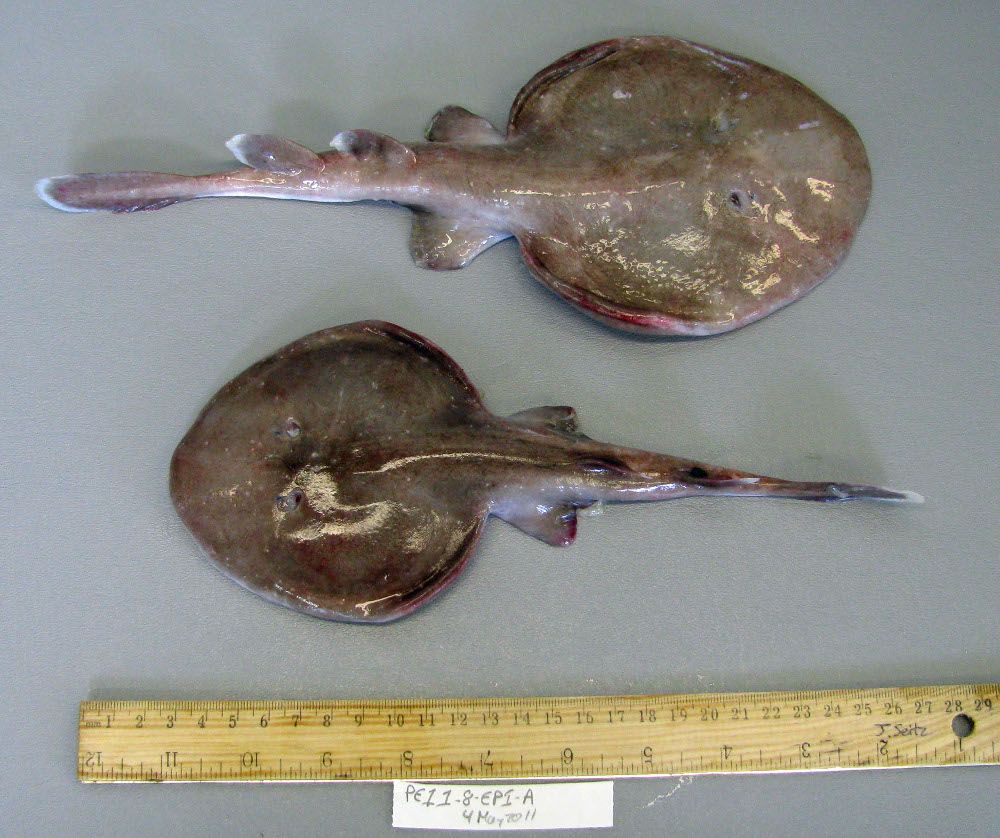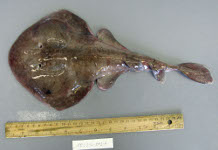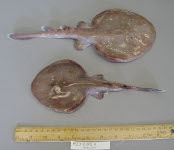Benthobatis marcida
Bean & Weed, 1909
Blind torpedo
Classification: Elasmobranchii Torpediniformes Narcinidae
Reference of the original description
Descriptions of two new species of electric rays, of the family Narcobatidae, from deep water off the southern Atlantic coast of the United States. Proceedings of the United States National Museum, 36, 677–680
Descriptions of two new species of electric rays, of the family Narcobatidae, from deep water off the southern Atlantic coast of the United States. Proceedings of the United States National Museum, 36, 677–680
Image of the original description

Benthobatis marcida Bean & Weed, 1909

Benthobatis marcida Bean & Weed, 1909
Synonyms / new combinations and misspellings
Benthobatis cervina
Benthobatis cervina
Description :
Citation: Benthobatis marcida Bean & Weed, 1909: In: Database of modern sharks, rays and chimaeras, www.shark-references.com, World Wide Web electronic publication, Version 01/2026
Please send your images of "Benthobatis marcida" to info@shark-references.com

Benthobatis marcida Bean & Weed, 1909, off Port Everglades Harbor, Florida, © Jason C. Seitz, ANAMAR Environmental Consulting, Inc.

Benthobatis marcida Bean & Weed, 1909, off Port Everglades Harbor, Florida, © Jason C. Seitz, ANAMAR Environmental Consulting, Inc.
Common names
 Elektrischer Tiefseerochen,
Elektrischer Tiefseerochen,  Torpedo,
Torpedo,  Blind Torpedo,
Blind Torpedo,  Deep-sea blind ray,
Deep-sea blind ray,  Deepsea electric ray,
Deepsea electric ray,  Pale blind ray
Pale blind ray
 Elektrischer Tiefseerochen,
Elektrischer Tiefseerochen,  Torpedo,
Torpedo,  Blind Torpedo,
Blind Torpedo,  Deep-sea blind ray,
Deep-sea blind ray,  Deepsea electric ray,
Deepsea electric ray,  Pale blind ray
Pale blind ray
Short Description
Narrow protractile mouth. Caudal is oval shape. Greater length of head anterior to spiracles, union of margins of its pelvic fins to their tips with the sides of the tail. Soft body and skin [199]. Light brown to yellowish-brown dorsal color pattern; white to yellowish-white ventral color pattern, sometimes with distinct yellow markings on posterior ventral disc surface, ventral pelvic fin area, and around mouth. Caudal fin length much less than 1/2 length of tail, roughly equal to 1/5 length of tail; relatively more pronounced upper and lower lobes with lower strongly convex. Distance between dorsal and caudal fins about equal to distance between first and second dorsal fins. Snout relatively short, generally less than 1/3 in disc-length (24% of disc length in 43.5 cm TL female, 25% in 48.5 cm TL), but never much greater than 1/3 as in B. moresbyi (ca 40% in lectotype); disc more rounded, not as elongated as in B. moresbyi (Ref. 48493).
Narrow protractile mouth. Caudal is oval shape. Greater length of head anterior to spiracles, union of margins of its pelvic fins to their tips with the sides of the tail. Soft body and skin [199]. Light brown to yellowish-brown dorsal color pattern; white to yellowish-white ventral color pattern, sometimes with distinct yellow markings on posterior ventral disc surface, ventral pelvic fin area, and around mouth. Caudal fin length much less than 1/2 length of tail, roughly equal to 1/5 length of tail; relatively more pronounced upper and lower lobes with lower strongly convex. Distance between dorsal and caudal fins about equal to distance between first and second dorsal fins. Snout relatively short, generally less than 1/3 in disc-length (24% of disc length in 43.5 cm TL female, 25% in 48.5 cm TL), but never much greater than 1/3 as in B. moresbyi (ca 40% in lectotype); disc more rounded, not as elongated as in B. moresbyi (Ref. 48493).
Distribution
Western Central Atlantic. South Carolina, USA to northern Cuba.
First record: 2019: off Venezuela [27305] Source: www.gbif.org
Western Central Atlantic. South Carolina, USA to northern Cuba.
First record: 2019: off Venezuela [27305] Source: www.gbif.org
Human uses
fisheries: of no interest
fisheries: of no interest
Remarks
shark-references Species-ID=579;
shark-references Species-ID=579;


















